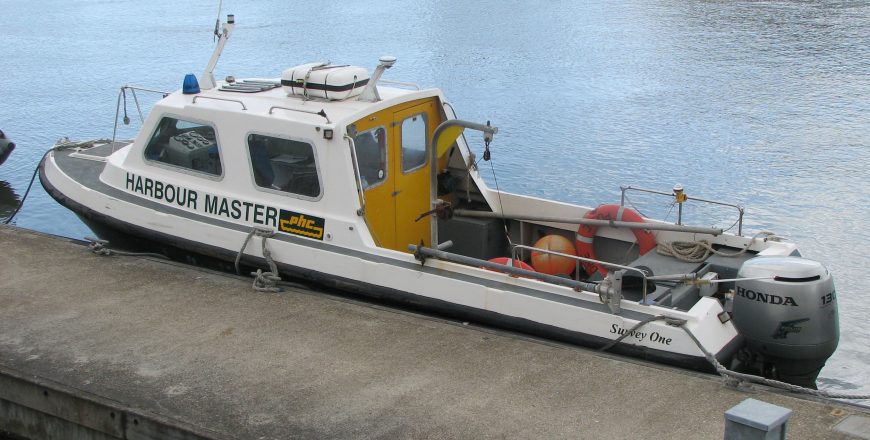
On a harbour master apprenticeship course, you’ll help enforce regulations and industry codes of practice in a port, harbour or marina.
Ports, harbours, jetties, and marinas are all forms of ports used for various purposes, including recreation, commercial trade, and defence.
As harbour master, you will be responsible for enforcing laws and industry norms while communicating with shipmasters, enforcement officers, stakeholders, tenants, members of the public, agents, customers, marine pilots, and port operations and commercial workers. You will make the final decision at all times, day or night; however, you may transfer authority to a deputy or assistant.
The harbour master has the power to enable vessels to enter and depart the port and monitor the flow of maritime traffic. You will also be in charge of port marine operations, such as deciding where boats should be docked in the harbour and providing vessel traffic control services.
What you’ll learn
On a harbour master apprenticeship course, you’ll learn to:
- Create and implement auditable port marine policies, strategies, and procedures based on sound evidence, and deliver an inclusive and effective service in collaboration with stakeholders that may be affected.
- Implement a system for regularly reviewing the applicability and effectiveness of local and national legislation.
- Implement an Enforcement Policy following statutory and local authorities, as well as industry best practices, which includes: collecting, preserving, and systematically documenting evidence and witness statements; taking enforcement action up to criminal prosecution; and initiating criminal prosecution.
- Conduct investigations; methodically collect, preserve, and document evidence and witness testimony.
- Inform the appropriate stakeholders about your findings and thoughts.
- Control the supply, upkeep, and inspection of navigational aids.
- Create, test, review, and adopt an integrated response plan for port emergencies in collaboration with affected parties.
- Create, test, assess, and update a port anti-pollution plan in collaboration with affected parties to minimise maritime, environmental, commercial, and reputational harm.
- Produce findings and recommendations that are documented in line with best practices. Distribute outcomes and outputs to stakeholders who may be affected.
- Identify and implement appropriate and adequate replacement navigational risk management techniques when a pilotage service is considered excessive.
- Identify and implement relevant and effective replacement navigational risk management strategies when a vessel traffic service is judged redundant.
- Develop precise methods and standards for pilot administration and the operation of a pilotage service in collaboration with stakeholders, and distribute findings and outputs to affected parties.
- Manage a port-specific pilotage service that follows pilotage regulations, guidelines, and standards.
- Develop precise guidelines for operating a vessel traffic service or local port information service relevant to the port in collaboration with stakeholders, and communicate them to affected parties.
- Implement a port-specific vessel traffic service or a local port information service that takes the local context, regulations, recommendations, and codes into account.
- Manage the potential dangers posed by toxic and polluting chemicals, as well as dangerous watercraft.
- Manage (and/or supervise) the delivery of different nautical services such as towing and mooring safely and efficiently.
- Develop, administer, analyse, and adapt a complete effective port environmental Safety Management System that encompasses the maintenance, capital dredging, and port waste management in light of new facts.
- Assess the influence of conservation initiatives on risk and risk reduction.
- Conduct a port security assessment with stakeholders to establish the kind and quantity of security required and then implement appropriate port security rules and methods.
- Manage port security and collaborate with law enforcement and other necessary agencies to keep port-security efficient while complying with regulatory security requirements.
- Analyse operational needs to establish the required resource structure and skill levels to offer a safe and efficient service.
- Create and carry out efficient employee communications, including engagement with worker representatives.
- Create and manage the marine budget for a port.
- Plan, lead and implement change within the Harbour Master’s jurisdiction.
- Contribute to the quality management methods of port management.
- Promote the port in business and other forums.
- Conduct a formal risk assessment in collaboration with stakeholders to identify all hazards and degrees of risk associated with land-side marine personnel worksite activities.
Entry requirements
You’ll usually need:
- Depending on the employer, but likely A-levels or equivalent qualifications or relevant experience.
- Apprentices without level 2 English and maths will need to achieve this level before taking the end-point assessment.
Assessment methods
The End Point Assessment consists of two distinct assessment methods:
- Project Report & Presentation with questioning
- Professional Discussion underpinned by Portfolio
- Written Exam
Duration, level, subjects and potential salary upon completion
- Duration: 48 months
-
Level: 6 – Degree Apprenticeship
- Relevant school subjects: Maths and geography
- Potential salary upon completion: £35,000
Apprenticeship standard
More information about the Level 6 Harbour Master Apprenticeship standard can be found here.
Apprenticeship end point assessment
For more information about the End Point Assessment Process, please read the Institute of Apprenticeships’ information page.
